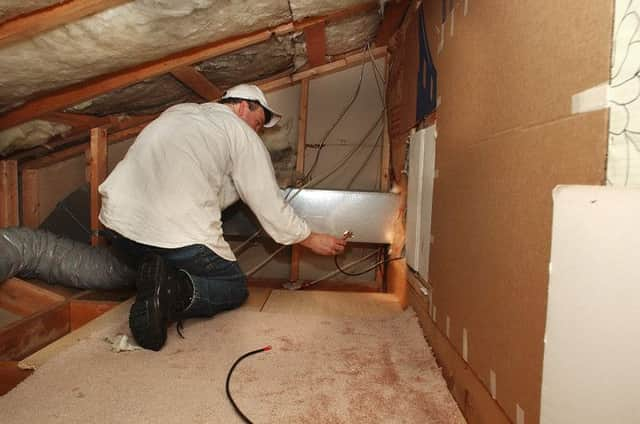No loophole in Tenements Act for ‘attic raiders’


A recent newspaper article headed “Loophole lets flats extend into shared roof space” described the practice of some top floor flat owners of extending into the roof space – to create extra accommodation exclusive to their flat and forming new windows within the roof structure. Many lower floor neighbours of such “attic raiders” are aggrieved.
It’s being suggested that this opportunity has been gifted to top flat owners due to some loophole in the Tenements (Scotland) Act 2004, but that’s not true.
Advertisement
Hide AdAdvertisement
Hide AdThe Act didn’t change the law on ownership in this respect, only the rules on maintenance. The Act did abolish the right of common interest in a tenement. This was the automatic right of owners of flats in a tenement (or of units in any other multi-ownership commercial building) of common interest in the parts of the building that are essential to its integrity – like the roof and external walls – regardless of who owns those parts.
However, this abolition did not prejudice the non-owners of the roof, as it replaced the old common interest with two things, being a duty on the roof owner to maintain it so that it provides support and shelter and a ban on the owner doing anything to the roof that would materially impair that support or shelter.
Owners can do what they want
Common ownership (also known as common property) is different. In many cases parts such as the roof and external walls will also be owned in common by all of the flat owners, but sometimes these parts might be owned exclusively by the top floor owner. Owners can do what they want with their property subject to them not breaching the new rules about support and shelter and, of course, complying with any legal requirements such as planning and building control rules.
The Act didn’t change the position on ownership. If the titles expressly state who owns the attic space, roof or airspace above the roof slopes then the titles prevail.
This applied under the old common law and continues to apply under the Act. If the titles aren’t clear as to who owns these parts, the old common law used to step in to allocate ownership and now the Act sets out who owns what – but they both give ownership of the attic space, roof and the triangle of airspace above the roof slope (up to the highest point of the roof ridge) to the owner of the top floor flat.
In many cases the titles say that the “roof” is owned in common by all flat owners, but it was decided, as long ago as a case in 1872, that “roof” does not include the attic space – that being owned (if the titles don’t expressly refer to it) by the owner of the top flat.
The major change made by the Act was not relative to ownership, but was to break the alignment between ownership rights and maintenance obligations.
Before the Act came into force, if the titles were silent on maintenance obligations, the owner of the roof would be liable to maintain it – so if the roof was owned solely by the top flat owner then he would bear the whole burden of maintenance. The Act changed that. It says that if the titles are silent on maintenance, then all owners must contribute to the costs of maintaining the roof – even if the roof is solely owned by the top flat owner.
No loophole to be closed
Advertisement
Hide AdAdvertisement
Hide AdIt is perhaps this disjoint between ownership rights and maintenance obligations which (whether or not with any justification) is perceived as unfair.
As I said earlier, there is no loophole to be closed – as loophole suggests a mistake. On the contrary, the current law is precisely what was intended by the Scottish Law Commission when they set out their proposals for a new law of the tenement, and their recommendations were implemented by the Scottish Parliament.
In many cases, the lower floor owners will be able to prevent this attic raiding. If the titles give all owners a right of common ownership in the attic space, lower flat owners can stop the top flat owner from annexing it for his own use.
Even if the titles only give all owners a right of common ownership in the roof, the lower flat owners can stop the top flat owner putting windows in the roof without their consent – which may be enough to prevent habitable accommodation from being created in the attic space, even if that space is owned by the top flat owner.
Beyond that, the lower flat owners might have some leverage if the proposed works will prejudice the provision by the roof of shelter to the rest of the building.
• Heather M Nisbet is a professional support lawyer in Morton Fraser’s real estate team www.morton-fraser.com
SEE ALSO